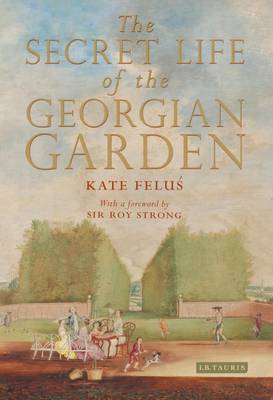
Kate Feluś, The Secret Life of the Georgian Garden (I.B.Tauris, 2016) £17.99
Feluś’s compass for this enticing new study is the long Georgian century, from the accession of George I in 1714 to the death of William IV in 1837 – thereby including the Regency as a coda. Her chosen framework is the four parts of the day: morning, afternoon, evening and night-time. This works well, but as she admits is something of an artificial construct, and few activities were limited by convention to a particular time. In her Introduction, Feluś claims the social use of the Georgian garden has remained untold, in fact secret. If an over-statement, the existing literature is certainly scattered, and to date there has been no systematic consideration of how these ‘agreeable retreats’ were enjoyed.
Morning is characterised as the appropriate time for a walk in the pleasure grounds or a drive through the park in a garden chaise, perhaps along a grass drive. As always, refreshment might be taken in a whimsical building or a tent, usually sited as an eye-catcher in the wider landscape. For the energetic (or hung-over) there might be a swim in a pool or a plunge in a still-popular cold bath. Alternatively, rowing or sailing could be enjoyed on the lake (few parks of any ambition lacked such, ideally contrived to resemble a sinuous river). On the largest sheets of water ‘naumachia’ – mock sea battles – might be staged, with remarkably ambitious men-of-war, sometimes bombarded from shore batteries. At Newstead, the 5th Lord Byron – an ex-midshipman – maintained a fleet of vessels including a 20-gun schooner manned by estate staff and professional sailors.
After luncheon, fishing was a quiet afternoon activity encouraging contemplation, while summerhouses provided private retreats for reading, letter-writing or needlework. For the more adventurous or curious, a prospect of the park and the wider estate might be taken from a belvedere or observatory, perhaps equipped with a telescope. For those in need of further stimulation there might be a visit to a museum or menagerie (many, in fact, aviaries for pheasants and the like), and even the most modest establishment would have a kitchen garden which could be shown off and discussed.
As the Georgian century progressed dinner, the main meal of the day, was taken ever later, sliding from early afternoon to 7 or 8 o’clock to early evening. So too did its accompanying entertainments which might include taking dessert, syllabubs or tea and coffee in a tent or garden building. Music – courtesy of musicians hidden in the bushes playing French horns or hautboys (obes) – provided accompaniment, as they did for the dancing which might follow, illuminated by lanterns strung in trees.
Feluś argues that one of the least understood aspects of the Georgian garden was how it was experienced at night, with many apparently appreciating the different sensations to be experienced on a moonlit walk. The full moon was sometimes chosen as the time for the most ambitious entertainments, with visiting guests clattering home by carriage long after midnight. With few exceptions, Feluś’s country house hosts and their guests are decorously well behaved. I suspect she underplays the extent to which loutish or drunken hooray-Henry behaviour was displayed, although she does specifically exclude from consideration activities associated with hunting where, especially by the Regency, boorishness was almost expected.
Feluś’s book is itself an entertainment, written with a light touch and – like a good party – of just the right length. Its scholarly underpinnings are fully present and correct, however: proper notes locating the huge number of examples and quotations which illustrate the narrative, a full bibliography and a good index. Moreover, it’s generously illustrated with apposite figures, and if some of the black and white ones are somewhat murkily reproduced the compensation is in the price –just £17 or so online. Strongly recommended.
Paul Stamper, Historic England
